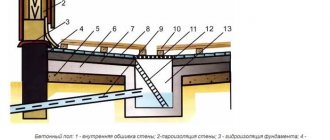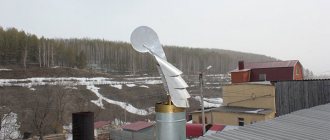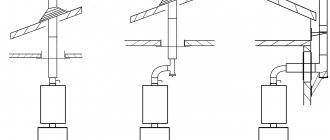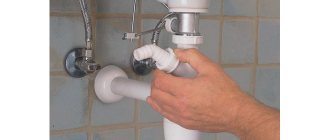Many owners of private houses, cottages and country buildings sooner or later decide to build a bathhouse. However, in order for the future construction to meet all safety requirements, it is important to think through and equip a fire protection system in advance. One of the most indispensable fire-fighting means is a spark arrestor, which prevents the occurrence and further spread of fire.
With this device you can protect your home from fire
Spark arrestor value
Often, solid fuel is used to light sauna stoves. Sometimes there is a difference in the quality of the material, which leads to sparking. A spark is a hot particle that does not burn during kindling. With a stream of hot gases, it is directed up the chimney pipe and flies out. This phenomenon can lead to unpleasant consequences.
Sparks very often land on the roof or wooden elements of the building. The wind can blow them several meters around, which leads to the appearance of fires. Dry leaves, pine needles, grass, hay, surrounding structures, trees - all this can catch fire from one spark. To extinguish a hot particle, it is necessary to ensure its contact with elements and surfaces with a high level of thermal conductivity. This way, a red-hot spark will lose its thermal potential even as it moves through the chimney. In other words, it will simply go out.
To achieve premature weakening of the spark thermal potential, a spark arrester is installed on top of the pipe. This element allows you to catch sparks as they come out. A properly made and installed flame arrester reduces the risk of a fire in the bathhouse (sauna) and surrounding buildings.
Installing spark arresters has a number of advantages:
- Provides fire protection when flammable materials are located nearby.
- Prevents sparks from hitting the roof, especially if it is made of flammable materials and a large number of leaves accumulate on it.
- It closes the chimney pipe from precipitation, leaves, and birds, which often like to build nests in it.
- Helps reduce resistance, which eliminates reverse draft and increases the traction force of the chimney.
Spark arrester for chimney
As is known, such high-temperature events as heating a bathhouse are always accompanied by significant draft and increased temperature from the fuel combustion side, especially at the stage of its ignition. This can cause the appearance of large sparks, which, with the help of hot air draft, will be carried through the chimney and into the open environment.
Thus, we can identify the main function of devices such as a flame arrester or spark arrester - this is the direct protection of flammable materials and structures.
This can be either a soft roof or a nearby wooden shed, forest, etc.
In order to make a spark arrester, it is necessary to prepare the materials for work in advance and think over its shape
Functions, features and types of spark arresters, their structures:
- The simplest but most effective model can be built independently with even the most minimal plumbing skills.
- They can have almost any shape, which determines their decorative adaptability at the discretion of the master.
- Some model shapes can provide additional draft while fuel is burning in the stove.
- To create such a device you will need the simplest equipment and material.
It is noteworthy that such devices can operate on the basis of two basic principles: Refraction of the direction of air flow and mechanical contact with heat conductors.
How does the spark arrestor element of a chimney pipe work?
The spark arrester has a simple but effective design. It is a nozzle for a chimney, which has a mesh on the sides and a cone on top, providing reliable protection from foreign objects. The spark arrester is installed on any type of chimney. The operating principle of this device is quite simple:
- During the heating of the furnace, the solid fuel material burns. The result is smoke and gas. It is known from physics lessons that air masses rush upward along a free path. In the case of a bath, the formed substances pass through the chimney channel, trying to escape out. In this case, the smoke plumes may contain unburned combustion products, which, like sparks, lead to a fire.
- In the presence of a spark arrester, smoke with hot particles “rests” against the first and main barrier in the form of a protective cone.
- The sparks' direct passage into the air is closed. They head to the sides, where another obstacle in the form of a net awaits them. Hot particles under pressure seep through the cells, losing the accumulated thermal potential.
The whole principle of operation of a conventional spark arrestor consists of three simple steps that protect owners from fire. You can make such a device yourself without spending a lot of money.
Maintenance of spark arresting systems
Like any simple mechanism, the spark arrester requires routine maintenance, which consists of the following:
- Inspection of the integrity of the entire structure. At least once a year.
- Cleaning the main components and assemblies from soot and other deposits. Twice a year.
- Unscheduled inspection and cleaning. For example, in areas with an abundance of common poplar, the fluff of this tree is able to clog the spark arrester mesh to a dense fiber state. In addition to deteriorating traction, such a nozzle is also a fire hazard. Such work must be carried out as an objective need arises and is not regulated by specific deadlines.
By the way! Work on maintenance and repair of spark arresters is classified as high-altitude, so their implementation must be ensured by strict compliance with the rules and safety requirements.
Systems made of ferrous metal under conditions of different temperature loads and condensation formation have a tendency to increased corrosion, which predetermines closer service attention to them than in relation to systems made of stainless steel.
Main models
The elements of the chimney that ensure the elimination of hot incandescent particles are different. At home, as a rule, two types of spark arrestors are used:
- Stainless steel casing, which is a mesh structure. You can do it using improvised means.
- Deflector. In addition to extinguishing solid hot particles, it improves traction by redirecting the wind flow. Protects the stove device and bathhouse from a dangerous phenomenon - backdraft as a result of strong winds.
The damper in the form of a casing is the most popular, since its design is quite simple. Holes are made in the pipe or a special nozzle in the form of a mesh is attached to it. The disadvantage of this design is the frequent revision of the spark arrester device. Perforated mesh quickly becomes clogged, as combustion products settle on their surface. The higher the degree of contamination, the less draft in the pipe. The spark arrestor, made in the form of a casing, is subject to frequent cleaning. On sale there are assembled casings for extinguishing sparks. Their advantage is their easy connection to the chimney pipe.
More modern devices are spark arresting devices - deflectors. Externally they look more aesthetically pleasing. When using deflectors, the draft in the chimney is not reduced. Such absorbers are equipped with mesh and perforation. Their distinctive feature is the presence of narrowing points, which allow increasing traction inside the spark arresting element. Depending on the location of the narrow sector, there are various models of dampers, many of which are very similar in appearance to the casing, but are more aerodynamic. The disadvantage is that it gets dirty quickly and requires frequent cleaning, especially when using resinous logs as fuel.
Distinctive properties
When installing a spark arrester on the chimney of a bathhouse, you need to know what main features this device has:
Installation of spark arresters is advisable only in bathhouses heated by solid fuel stoves. The view doesn't matter.- A mesh is installed along the side surfaces of the device. The cell size is no more than five millimeters. With large opening areas, there is a possibility of hot particles leaking through the trap. It is also impractical to make them too small, as the mesh will quickly become dirty. The passage of smoke is obstructed, which can lead to the accumulation of caustic vapors inside the steam room.
- Installation of a spark arrestor is mandatory if there is a roof made of flammable materials.
- Installation of the device is required when the chimney is located in a straight direction. The condition applies to baths and saunas.
- Installed to protect the chimney from nesting birds and foreign debris.
- The catcher mesh undergoes frequent cleaning, since all particles that were not burned during the combustion process settle on it. The spark arrestor requires especially careful care when using resinous logs as fuel.
All of the listed distinctive properties of spark arresters characterize this device as one of the main elements responsible for fire safety.
The process of making a device with your own hands
You can make a simple spark arrestor with your own hands. Before you start creating a device for a chimney, you need to prepare all the necessary tools and materials:
- Stainless steel sheet with a thickness of 0.5 to 1 centimeter.
- Rigid mesh made of durable metal.
- Rivets are preferably made of steel.
- Scissors for cutting metal.
- Welding device.
- Angle grinder.
The sequence of operations is as follows:
- Measure the chimney opening.
- Make a preliminary sketch of the future spark arrester, taking into account all the components.
- Cut out mock-ups of the parts that make up the device from cardboard.
- Attach cardboard templates to a sheet of metal and carefully cut out analogs. In this case, dimensional accuracy must be observed.
- The mesh can be made from metal rods with a thickness of one to six millimeters. The possibility of using a finished product is acceptable.
- Connect all existing joints by welding. Clean them with a grinder.
- Secure all parts with strong rivets. The best option is made of steel.
- Install the spark arrester on the chimney pipe. Secure it carefully so that it does not blow away in a strong gust of wind.
- If desired, a deflector can be attached to the spark arrester.
- Using special scissors, cut out a visor from a metal sheet, which is subsequently bent at the desired angle. Secure all folds with rivets.
- Fasten the manufactured cone and the base of the device together. For fixation it is advisable to use steel rivets.
Creation of a deflector type spark arrester
Deflector designs are more effective compared to mesh models of spark arrestors. The Tsaga deflector with an apron that captures hot, incandescent particles is very popular. To create it you need:
Cut out a cardboard template of the proposed design. You will need it when cutting metal.- Measure the diametrical size of the chimney pipe.
- The inside of the spark arrester is a pipe with a diameter larger than the chimney. If the required workpiece is not available, it must be made from a stainless steel sheet.
- Roll out the upper edge of the sleeve being created, since its diametrical size should exceed the lower one.
- Make a casing shell from a piece of pipe. Using metal plates, attach it to the sleeve.
- At a six-centimeter distance below the casing, attach an apron whose diameter exceeds the casing. Otherwise, the spark arrester will be ineffective. In appearance, the part resembles a curved plate, which serves as the main component responsible for catching sparks.
- It is necessary to make special holes in the apron through which accumulated water will subsequently drain.
- Attach the cover over the top casing side using rivets. For them, drill the required number of holes in the right places in advance.
- Attach the created spark arresting device to the pipe. It is imperative to check the strength of the structure so that it can withstand strong gusts of wind.
- Additional strength and durability can be provided by attaching several rolled stiffeners.
Installation of a chimney and calculation of pipe diameter
A small, portable potbelly stove requires a lightweight, collapsible smoke exhaust system. A damper is located at the entrance to the chimney and opens during combustion. Part of the pipe located inside the firebox serves as a heat exchanger. The exit from the premises should be short. The pipe consists of two or more elements to make it convenient to replace burnt areas. Its diameter should be calculated in ratio to the volume of the firebox 1:2.7. For example, if the combustion chamber is 60 l, the pipe should have a diameter of 160 mm.
After the stove is installed and ready for use, it is necessary to install a chimney that can function properly, retain heat in the room and at the same time prevent combustion waste from entering the air of the room where the stove is installed. To do this, you need to correctly calculate the diameter of the pipe, its length and think about how it will exhaust the smoke into fresh air.
In order for the heating system to have the highest efficiency, it is necessary that the pipe for the potbelly stove provides sufficient draft.
The best ratio of pipe diameter to combustion chamber is 2.7 millimeters to 1 liter. For example, let's take a potbelly stove with a combustion chamber of 50 liters: 2.7*50=135 mm. It is this chimney diameter that will be optimal for the efficient operation of a 50-liter potbelly stove.
Once the diameter of the chimney pipe has been determined, the length of the entire pipeline should be calculated. In these calculations, it is important to take into account not only the location of the potbelly stove, but also how far from the ridge the chimney is located on the roof.
The pipe outlet above the roof should be located according to certain rules:
- The chimney is located from the roof ridge at a distance of up to 1500 millimeters, which means the pipe outlet should be located at a height of 50 centimeters above the top of the ridge;
- With a distance to the canopy of 150-300 centimeters, the pipeline outlet can be positioned at the same level with it;
- If the chimney is located near the edge of the roof, then its outlet should be slightly lower than the ridge, or at the same level with it;
The second option for the pipe to exit is through the wall, and not through the roof. In this case, the end of the chimney should be located just below the top of the roof ridge.
We suggest you read How to make a ceiling in a steam room
But the main long pipe will be the total distance from the pipe outlet to the potbelly stove itself - the calculations in each individual case will be different, it all depends on what floor, in what place in the room and at what height the potbelly stove will be located.
Additional options on how to protect your sauna from sparks
In addition to installing a spark arrestor, there are several other options for protecting the bath:
- The simplest and most common method is to weld the chimney pipe tightly. A large number of holes are drilled in the upper part to allow smoke and gas to escape. This method is also suitable for a pipe installed on an existing one.
- The second option to protect the building and surrounding buildings from fire as a result of a falling spark is to weld a metal mesh at the end of the chimney pipe. The disadvantage of this design is rapid contamination, leading to weakening of traction. Frequent replacement with a new mesh will be required.
- To prevent return draft as a result of strong winds, a deflector is installed on the chimney pipe.
- When building a chimney, the structure is often made with bends. Hot particles ejected from the furnace are extinguished along the way, without reaching the top of the pipe. In addition to extinguishing, the chimney with elbows provides the steam room with additional heat.
All of the above methods have a simple design, so you can create them yourself, using improvised means, without spending a lot of money. All of them are effective and fully provide protection for the bathhouse roof and surrounding buildings from dangerous fires resulting from the ingress of a hot particle. You can install a spark arrester of any type in a short time, but the effect will be significant.
Why does it smoke?
If the stove in the bathhouse smokes during initial use, the problem may directly be due to improper installation of the structure. We strongly recommend that you contact a specialist for help, since it will be quite difficult to find and fix the problem yourself.
In addition, there are other reasons why the stove in the bathhouse smokes. These include:
- First of all, strong winds can interfere with the exit of smoke from the chimney. In most cases, this is due to the fact that the pipe is located slightly below the ridge. The problem can be solved by making the pipe longer, or by installing a protective cap;
- Damage to the roof may also be the answer to the question - why does an iron stove smoke in a bathhouse? This is explained by the fact that if there is an attic flue, moisture enters it and seeps through damaged roof areas. This problem can be eliminated only by repairing these areas;
- An iron stove in a bathhouse smokes most often due to an excessively dirty chimney or foreign objects in it. Detecting this problem is as easy as shelling pears, since a clear sign is poor draft in the sauna stove. For example, very often birds build nests in chimney pipes, and debris and branches from nearby trees can get into an unprotected pipe. This problem can be solved quite simply; you just need to clean the chimney of soot, soot and foreign objects. As a tool, it is best to use a special flexible brush with nylon bristles;
- Among other things, smoke can be caused by too large a vent. This is explained by a large amount of cold air entering the hole, which subsequently heats up and pushes the smoke out.
The stove in the bathhouse is smoking - what to do? This is a rather serious problem that is easier and cheaper to prevent than to solve.
Problems arise due to the fact that strong air currents form above the roof, preventing the smoke from fully escaping from the chimney.
That is why the following factors should be taken into account at the design stage:
- If the pipe is located at a distance of 1.5 meters from the ridge, then its height should exceed the level of the top of the roof by 50 cm;
- If the pipe is located at a distance of 1.5 to 3 meters, then it is permissible to install a pipe whose height is equal to the level of the ridge;
- If the chimney is located at a fairly significant distance, which exceeds 3 meters, then the pipe should be no lower than an angle of ten degrees from the ridge.











